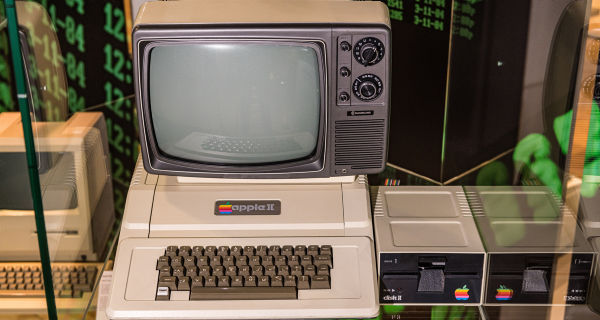The History of Computers: From Primitive Instruments to Contemporary Machines.
Introduction:
History is a fascinating journey that traversed centuries, starting from mechanical devices to the integrated systems we know today, computerized, interrelated, and digital. The invention of computers, as we know them today, only dates back a few decades; however, the core concepts are greatly older. This article highlights significant landmarks ranging from the ancient abacus to the contemporary supercomputers of the present day.
Ancient and Pre-Modern devices:
The Abacus (circa 2000 BCE):
The abacus, one of the earliest computing devices, served various ancient civilizations, including the Chinese, Greeks, and Romans. It consists of beads on rods and was used for simple arithmetic calculations. The abacus is taken by many as the source for future computational thinking, assisting myriad people in more efficient number crunching.
The Antikythera Mechanism (circa 100 BCE):
An instrument recovered from an ancient Greek shipwreck, the Antikythera mechanism is often referred to as possibly one of the oldest known analog computers, used to predict astronomical phenomena such as eclipses and planetary positions, thus reflecting the Ancient human desire to build machines that could unearth solutions to very complicated problems.
Napier’s Bones and Slide Rule (Early 1600s):
Scottish mathematician John Napier invented Napierates Bones, a set of numbered rods enabling people to multiply big numbers with ease. Around the same time, the slide rule-a methodology for making logarithmic and exponential computations in an analog form-appeared as a standard device among scientists and engineers.
Mechanical Era:
Pascal’s Calculator (1642):
Blaise Pascal, a French mathematician, invented the Pascaline, one of the first mechanical calculators able to add and subtract. It incorporated gears and wheels to automate basic arithmetic. While it saw no commercial success, it paved the way for further mechanical devices.
The Stepped Reckoner (1673):
Gottfried Wilhelm Leibniz enhanced Pascal’s design by making the Stepped Reckoner, a device capable of multiplicative, divisive, additive, and subtractive functions. He contributed to the development of binary arithmetic, which became the basis of modern computing.
Jacquard Loom (1804):
Invented by Joseph-Marie Jacquard, the Jacquard Loom was the revolutionary weaving machine controlled by punched cards, defining the pattern of textiles that would influence early computing machines, demonstrating how a series of instructions could be stored and executed automatically.
The Birth of Computing:
Analytical Engine of Charles Babbage (1837):
Charles Babbage, also known as the “father of the computer,” envisioned the Analytical Engine as a mechanical general-purpose computer. Though never completed in his lifetime, the design was considered groundbreaking. It incorporated a central processing unit (CPU), memory, and looping and conditional processes, the vital organs of modern computers.
Ada Lovelace Programming (1843):
Mathematician and Babbage’s closest collaborator, Ada Lovelace, is often recognized as the first computer programmer. She wrote algorithms for the Analytical Engine and understood that its function could extend beyond calculation, foreshadowing a global area of general-purpose computing.
The Age of Electromechanics:
Hollerith’s Tabulating Machine (1890):
American inventor Herman Hollerith invented the tabulating machine for the American Census, which used punched cards to process data more quickly and efficiently. Hollerith’s machine used punched cards to speed up the census process, setting a milestone for data processing. He founded the Tabulating Machine Company, which later evolved into IBM (International Business Machines).
Alan Turing and the Turing Machine (1936):
The British mathematician Alan Turing has worked out the theoretical model that could simulate the logic of any computer algorithm; a vast accomplishment truly forming the basis for a programmable computer and meant to see great use in developing modern computing theory.
The Z3 and Colossus (1940s):
The German engineer Konrad Zuse built the Z3 in 1941, the world’s first programmable electromechanical computer. Meanwhile, the Colossus, an early programmable digital computer, was developed by British codebreakers in World War II; their task was to devise a way of deciphering messages from Nazi Germany.
The Digital Revolution:
ENIAC (1945):
The first large-scale electronic digital computer was the Electronic Numerical Integrator and Computer, developed by John Presper Eckert and John Mauchly. Any numerical problem would be tackled by this beast much faster than any mechanical predecessor. Its development was the beginning of the digital computing age.
Transistors and Early Mainframes (1950s-1960s):
With the invention of the transistor in 1947, the history of computing changed radically by replacing heavy vacuum envelopes and concisely making sense of information sources. In the 1950s, the development of mainframe computers by IBM and others continued-the great institutions like governments and big businesses used it for data processing.
Integrated Circuits and the Microprocessor (1960s-1970s):
The invention of integrated circuits (ICs) in the late 1950s made it possible to fuse numerous transistors in one silicon chip that enhanced computing power tremendously. In 1971, the first microprocessor, namely the Intel 4004, was introduced. It was practically a CPU compressed on a single chip, and it set the stage for personal computers.
The Personal Computer Era:
The Altair 8800(1975):
The Altair 8800 is considered to have leapt into the personal computer era. This end-emicrocomputer kit developed by Ed Roberts made Bill Gates and Paul Allen develop BASIC and constitute Microsoft due to its runaway success.
Apple, IBM, and the Birth of the PC (1980s):
In 1976, the founding of the Apple Corporation by Steve Jobs and Steve Wozniak opened the era of the Apple I, and, not long thereafter, the Apple II, for personal and elementary educational purposes. This set the pace for personal computers, the IBM PC announced by IBM in 1981 that developed an open architecture and ushered in wide third-party software development.
Graphical User Interface and the Macintosh (1984):
With the release of the Macintosh in 1984, Apple made popular the graphical user interface, which allowed users to interact with their computers using icons and windows rather than through text-based commands. Cementing its place in history, facilitated access to computing technologies for non-technical personas.
While beginning in ARPANET during the 1960s,
the Internet itself did not come to be a world phenomenon until the 1990s. That is when Tim Berners-Lee, in 1991, invented the World Wide Web to make the Internet somewhat more navigable and led to the first browsers, such as Netscape and Internet Explorer.
The Proliferation of Laptops, Smartphones, and Mobile Computing (2000-Present):
As computing power became more enhancing, so came the shift towards portable devices. With laptops being mainstream in the 1990s, the introduction of the smartphone in the 2000s-fueled by the widespread success of Apple’s iPhone in 2007-changed people’s interaction with computers forever. The smartphone has successfully converged computing power, communication, and media consumption into one device, thus marking the inception of modern mobile computing.
Conclusion
Computers have a long and storied history that demonstrates the ability of people to solve increasingly complex problems through technology. Starting from simple mechanical devices, the computer as we know it today is an impressive feat of engineering and innovation. Computers have changed virtually every facet of human activity, and they continue to evolve with the development of n ew technologies like quantum computing and artificial intelligence. The history of the computer is one that shows no signs of slowing down.


